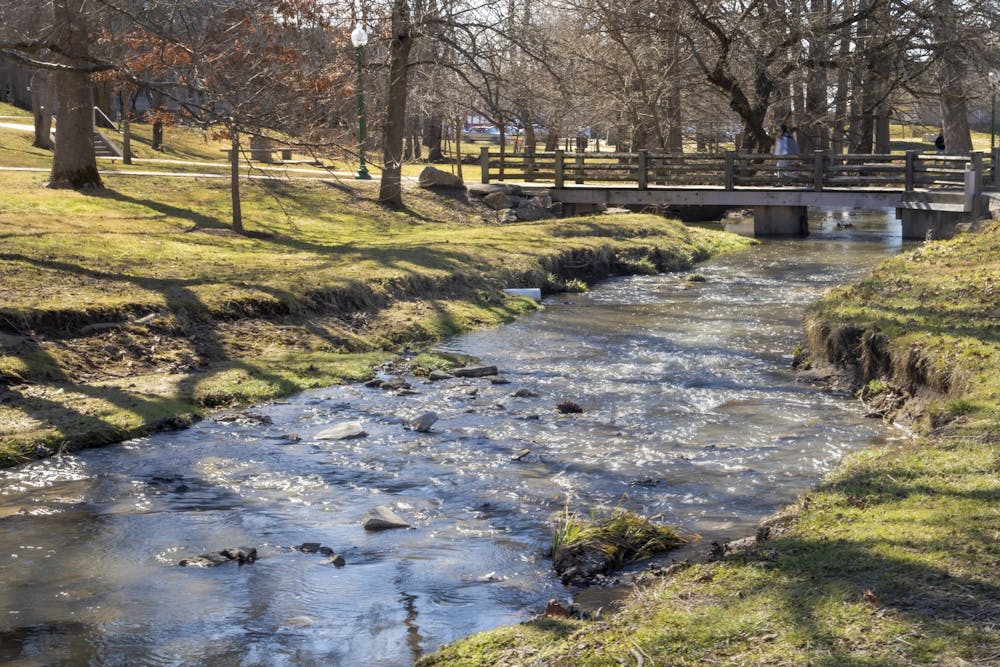This year’s winter season, which officially concluded on March 20, has been the fifth warmest recorded in the northern hemisphere, according to the National Oceanic and Atmospheric Association.
According to the National Weather Service, Bloomington’s average temperature in January and February was 8 and 7.5 degrees warmer than each month’s 30-year average, respectively.
“I think all of us can tell that the winter here in Bloomington has been warmer than usual,” Cody Kirkpatrick, a senior lecturer in the IU Department of Earth and Atmospheric Sciences, said. “We have had only a few inches of snow and typically get between 12 and 18 inches of snow.”
Bloomington received a total of 2 inches of snow between December 1 and February 28 this year. The warm temperatures and a lack of snow can impact everything in the environment, from flower blooms to agriculture and beekeeping.
Related: [OPINION: Being in nature can make you feel connected to your roots]
James Ryan, an IU graduate student studying atmospheric science, said warm winters can upset natural bloom cycles of flowers and plants.
“If you have a warm enough February that tricks some plants into blooming, then a March that is cold enough, like ours has been, can kill or damage those plants,” Ryan said.
Ryan said climate change is both a cause and effect of warmer winters. As global temperatures rise, winter temperatures rise alongside them. Even small variations in climate caused by climate change can matter.
One such effect is atmospheric warming due to a lack of snow, Ryan said. Without snow, which reflects light from the sun, the earth’s surface absorbs more sunlight, causing the atmosphere to heat further.
Ethan Steward, president of the IU American Meteorological Society, said three major climate phenomena have also contributed to this winter’s abnormal temperatures.
One climate phenomenon is La Niña, which happens when westward winds over the Pacific Ocean are stronger than normal, Steward said. This pushes warm water from North America towards Asia. Colder water comes up to replace the warm water at the surface, which affects upper air patterns in the United States.
“During La Niña years, especially here in Indiana, we typically get a warmer and much wetter winter,” Steward said.
Another circumstance that has caused warmer temperatures is the flow of the polar jet stream, Steward said. The polar jet stream is made up of narrow bands of winds in the troposphere, the lowest layer of Earth’s atmosphere around five to nine miles above earth’s surface.
“This jet stream tends to act as a barrier between the warm southern air and the cold arctic air to our north,” Steward said. “Depending on where this jet stream is at, we can experience more or less cold air coming down to the United States.”
Steward said this winter, the jet stream has been north of the U.S., shielding Indiana from colder temperatures.
The polar vortex has also influenced the northern hemisphere’s warmer weather by keeping cooler air confined to the north, Steward said. The polar vortex is a band of fast winds in the stratosphere, the second lowest layer of the Earth’s atmosphere above the polar jet stream. Steward said that the polar vortex has remained stable this winter, preventing cold arctic winds from reaching Indiana.
Steward said though we might not see winters as warm as this one in the near future because of unique climate circumstances, due to climate change, the earth will generally see more warm winters in coming years.
Related: [Indiana Senate unanimously passes energy policy bill]
Steward said that choosing green energy and reducing fossil fuel emissions will help alleviate some of the major effects climate change may cause.
“I do want to express that yeah, our winters are going to be warmer, and climate change is happening, but it’s not all doom and gloom,” Steward said. “A lot of climate change is dependent on what we do today. We have the opportunity to save our planet, we just need to start acting soon.”




